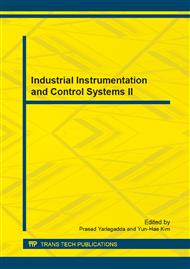p.1266
p.1271
p.1275
p.1281
p.1286
p.1292
p.1296
p.1303
p.1309
Process Monitoring and Adjustment Based on Optimal RBF Network
Abstract:
Modern complex manufacturing process output data showed high autocorrelation, resulting in the output of the process to deviate from the design target , or that false alarms increasd in traditional control chart in monitoring process. Statistical Process Control (SPC) and Automatic process control (APC) are main methods of industrial processes. Study based on the optimization of radial basis (Radial Basis Funtion RBF) neural network integrated SPC/APC quality control model, the forecast MMSE controller based on optimal radial basis function networks were utilized to adjut process of productive process output, and residual control charts were utilized to monitor process output after adjustment. Results show that optimal RBF network can improve forecast accuracy and adjustment effect, eliminate effectively process output autocorrelation. The residual control chart will in steady state and with small fluctuation. Intergrated SPC/APC quality control model based on optimal radial basis function can eliminate process fluctuation effectively and guaranteeproduct stable quality in process quality control.
Info:
Periodical:
Pages:
1286-1291
Citation:
Online since:
July 2013
Authors:
Price:
Сopyright:
© 2013 Trans Tech Publications Ltd. All Rights Reserved
Share:
Citation:


